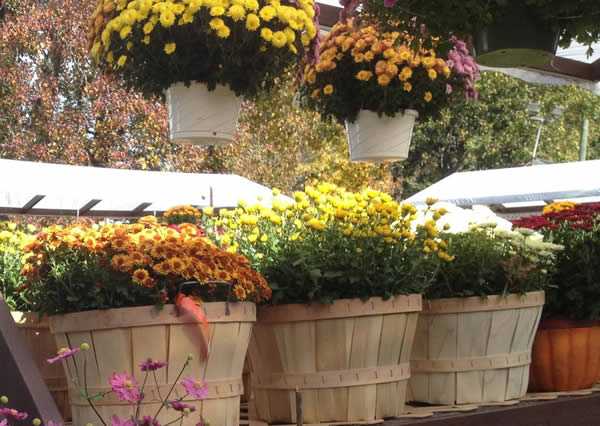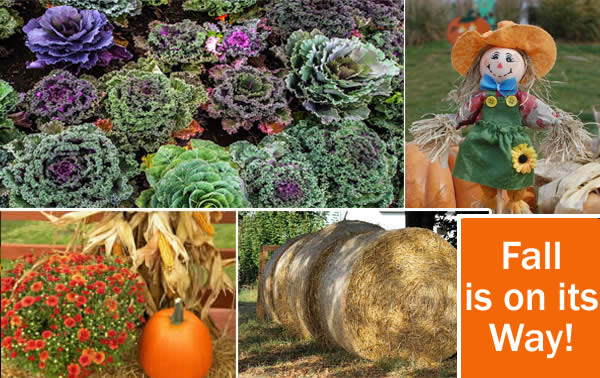
5 More Mistakes Made by the New Gardener
1. Planting too deep:
All trees, shrubs, perennials and annuals (that means everything)
should be planted at the same level as they were in the container
they came out of.
Having said that, there may be an instance, now
and then, when a plant in a container has some exposed roots because
of soil erosion caused by watering the plant; of course, in this case
you can cover the exposed roots.
DO NOT, however, raise the soil up
around the trunk or the main stem(s) of the plant. This can cause
the bark there to rot, eventually causing the plant to die.
If, for some reason, you can't plant at the same level as the
soil in the container, it is all right (and in some soils, like heavy
clay, preferable) to plant it a little high.
There are a couple of plants (tomatoes and marigolds come to mind)
that you CAN plant deep; these two examples will actually develop
roots along the buried part of the stem.
By the same token, there
are a couple of plants that require being planted a little high (I'm
thinking camellias and azaleas). But if you're a new gardener,
just keep it simple at first and plant most everything at the same
level it was in the container - you won't go wrong.
2. Removing plants that are dormant because they look dead:
As you probably already know, there are trees and shrubs that keep
their leaves year-round (these are called “evergreens”)
and those that lose their leaves in the winter (known as
"deciduous"). Some of the deciduous kinds can look
notoriously dead when they have no leaves; also, some deciduous trees
and shrubs break dormancy later than others.
Before you give up on
your plant and decide to give it the ax, perform a simple test. With
your fingernail (on plants with softer bark), a paring knife or the
blade of a pruning shear nick a very small area of the bark of the
plant in question. If it is alive, you will see green right under
the nicked bark.
There are also evergreen perennials and those that die to the ground
in the winter (AKA "herbaceous"). These herbaceous types
will re-grow in the spring from the same root. Although there are
many, one example of an herbaceous perennial is Gloriosa Daisy.
Don't be in a hurry to dig up and discard a perennial that dies
to the ground.
As with the trees and shrubs, some send up new growth
earlier than others; this can also depend on how cold or warm the
preceding winter was and how early spring breaks, both of which can
vary from year to year.
3. Applying too much fertilizer or fertilizing when the plant is stressed for water:
If you want your plant to grow really fast, the way to do it is to
feed it more than the package recommends, right? WRONG!!! Too much
fertilizer is actually worse than not feeding your plant at all;
neither scenario is good, but an over-fertilized plant will die a lot
quicker than an under-fertilized one.
Too much fertilizer will burn
your plant and, depending on the amount you gave it can kill it
within a day or two. If you have accidentally fertilized a plant too
heavily try to scrape away the excess, if possible.
Then apply a lot
of water, to try to dilute the fertilizer and wash it out of the root
zone of the plant. This must be done as soon as possible. It is
easier to burn a plant with granular fertilizer than it is with
liquid fertilizer.
Another no-no is fertilizing your plant when it is dry. When
fertilizer is applied to a plant, water is given immediately
thereafter so the plant can draw up food. When an extremely dry
plant is fertilized, it draws up the water (and the fertilizer) much
more rapidly than it normally would; this results in a burn. Make
sure your plant is moist and not stressed for water before you
fertilize it.
4. Using a weed-eater around the trunks of trees:
The results of this practice are so widespread that there is now a
commonly-used name for it: “weed-eater disease”. It is
really tempting (probably because it's so much faster) when
trimming grass around the trunks of trees to grab the trusty ol'
weed-eater instead of the grass shears.
Problem is, some trees
(especially those with thinner bark) can be killed by this practice.
Directly under the bark of the tree is the cambium layer; if this is
damaged, everything above it will die. If the whole circumference of
the trunk is damaged, the whole tree will die. While some trees have
thick enough bark to withstand the ravages of the weed-eater, why
take the chance?
5. Pruning (some) spring-flowering shrubs at the wrong time of the year:
This gets a little complicated, but we'll try to keep it fairly
simple. Some flowering shrubs bloom on new wood and some bloom on
old wood.
The most common time to prune things is in the winter or
early spring, depending on where you live. If your shrub blooms on
new wood, this won't be a problem.
But some flowering shrubs
(like lilacs) bloom on old wood. What this means is that they start
forming their flower buds in the summer of the year before they bloom
(even though you can't see them yet).
You can see where winter
or spring pruning on a shrub like this would create a problem. The
problem is, you won't have any flowers the following spring.
The time of year to prune this type of shrub is immediately after it's
finished blooming. If you are in doubt about when to prune your
flowering shrub, just stop by and ask us!
Click to print this article.














